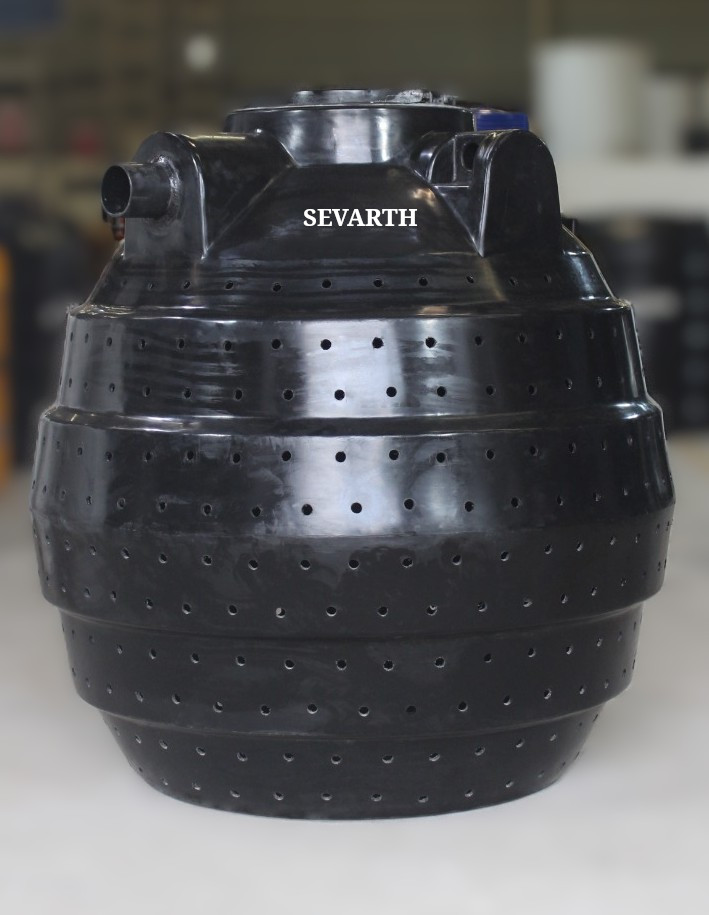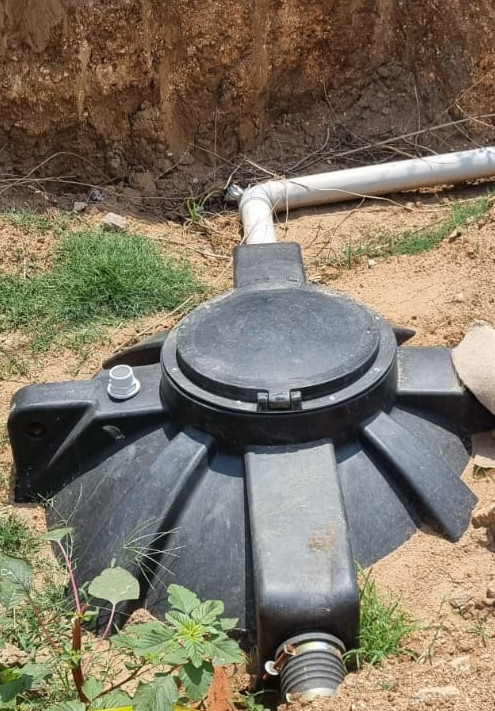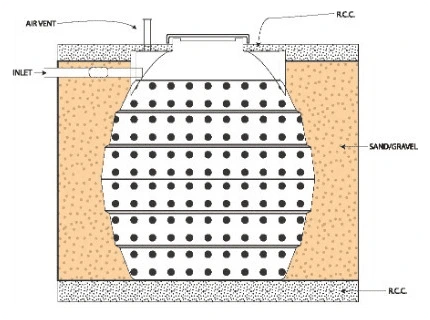Soak Pits
Soak pits are simple and effective wastewater disposal systems designed to filter and absorb treated effluent into the ground. These underground pits help in natural filtration and groundwater recharge, making them an eco-friendly alternative for wastewater management.
A soak pit receives wastewater from a septic tank (or other wastewater treatment system) and allows it to gradually percolate into the soil. The gravel and sand layers filter contaminants, ensuring safe absorption.

Advantages
The principle advantages of soak pits are:
- Eco-friendly & sustainable: Takes advantage of natural processes only without the need of any chemicals.
- Prevents waterlogging: Efficiently absorbs excess wastewater, promoting hygiene.
- Cost-effective: Requires no mechanical parts or power supply.
- Odour-free: Proper installation ensures no foul smells.
- Minimal maintenance: Lasts 10–15 years with periodic cleaning.

Working Principle
The main features of a soak pit are:
- Excavation: A soak pit is typically a large, shallow excavation, often rectangular or circular in shape. The depth and size of the excavation depend on the intended use, soil conditions, and local regulations.
- Lining: The lining of a soak pit can be permeable (e.g., geotextile fabric) or impermeable (e.g., concrete or plastic), depending on the intended use and soil conditions.
- Aggregate fill: The excavation is typically filled with a layer of aggregate material, such as gravel or crushed stone, which allows water to flow freely. The size and depth of the aggregate layer depend on the intended use and soil conditions.
- Filter media: A layer of filter media, such as sand or geotextile fabric, may be used to filter out sediment and contaminants from the water. The type and thickness of the filter media depend on the intended use and water quality requirements.
- Inlet and outlet: An inlet pipe directs water into the soak pit. An outlet or overflow pipe allows excess water to flow out of the soak pit during heavy rainfall events or when the pit is full.
- Vent pipe: A vent pipe may be used to provide ventilation and allow air to enter the soak pit.
- Surrounding soil: The surrounding soil plays a crucial role in the functioning of a soak pit, as it allows water to infiltrate and filter out contaminants.

The Sevarth USP

We provide customised, effective and economical solutions for soakpits. Please reach out to us for any enquiries and we will get back with the best offer.